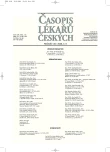Vacuum Assisted Closure Therapy – Overview of Lesson and Applications
Podtlakové uzatváranie rán – nové poznatky a možnosti aplikácie
Cieľom tejto štúdie bolo prehľadne prezentovať najnovšie informácie o podtlakovom uzatváraní rán (VAC terapia), ako novej metodike v chirurgickom ošetrovaní rán. Podtlakové uzatváranie rán je metódou liečby hlavne tých rán, ktoré sa hoja per secundam. Princípom postupu je umiestnenie špongie priamo do rany, ktorá sa následne prelepí fóliou. Drenáž rany je zabezpečovaná odsávacou hadičkou spojenou s VAC pumpou, produkujúcou podtlak. Tým je z rany odstraňovaný výpotok spolu s infekčným agens, zvyšuje sa teplota rany a spodina rany je mechanicky stimulovaná, čo zlepšuje proliferáciu buniek, najmä fibroblastov, a rast neokapilár. Väčšina publikovaných prác prezentuje pozitívny vplyv podtlakovej terapie na hojenie rán. Najnovšie práce popisujú dokonca pozitívny vplyv VAC terapie aj na hojenie infikovaných rán, hojenie rán v hrudníkovej chirurgii i traumatológii, ako aj hojenie rán u diabetických pacientov. Kontroverzné je použitie tejto metódy u onkologických pacientov, aj v tejto oblasti však boli popísané pozitívne výsledky VAC terapie. Na druhej strane však boli publikované aj práce dokumentujúce nežiadúce účinky VAC terapie, a to predovšetkým rozvoj infekcie v rane. Napriek tomu, že VAC terapia nie je v súčasnosti u nás ani v zahraničí štandardným spôsobom ošetrovania rán, publikované práce svedčia pre jej použiteľnosť v širokej škále chirurgických odborov.
Kľúčové slová:
podtlakové uzatváranie rán, VAC terapia, hojenie rán.
Authors:
T. Toporcer; J. Radoňak
Authors‘ workplace:
II. chirurgická klinika LF UPJŠ, Košice
Published in:
Čas. Lék. čes. 2006; 145: 702-707
Category:
Review Article
Overview
The aim of this review was to provide a comprehensive actual overview of the Vacuum Assisted Closure therapy (VAC). VAC is new method for wound treatment. VAC is assigned especially for per secundam healed wounds. Opencell foam is placed into the wound with the evacuation drain. The wound side and foam are then covered with an adhesive drape. The evacuation drain is connected to a computerized vacuum pump. The VAC removes excess fluid, reduces the number of microorganisms and increases temperature in the wound. Mechanical stress causes granulation tissue formation and neoangiogenesis. The most of published studies present positive influence of VAC for wound healing. The newest studies present positive influence for healing of contaminated wounds, wounds after thoracic surgery, traumatic wounds and also for wounds of diabetic patients. The use of VAC for oncology patients is controversial, but there are some studies to present VAC positive effect in these cases, too. However there are a few studies to present negative complications of VAC, especially increase of microorganisms in the wound. For all that VAC is not standard for wound healing treatment now, presented studies point out that VAC can by used in generally surgery.
Key words:
vacuum assisted closure, VAC, wound healing.
Labels
Addictology Allergology and clinical immunology Angiology Audiology Clinical biochemistry Dermatology & STDs Paediatric gastroenterology Paediatric surgery Paediatric cardiology Paediatric neurology Paediatric ENT Paediatric psychiatry Paediatric rheumatology Diabetology Pharmacy Vascular surgery Pain management Dental HygienistArticle was published in
Journal of Czech Physicians

- Advances in the Treatment of Myasthenia Gravis on the Horizon
- Metamizole vs. Tramadol in Postoperative Analgesia
- Metamizole at a Glance and in Practice – Effective Non-Opioid Analgesic for All Ages
- Metamizole in perioperative treatment in children under 14 years – results of a questionnaire survey from practice
- What Effect Can Be Expected from Limosilactobacillus reuteri in Mucositis and Peri-Implantitis?
Most read in this issue
- Vacuum Assisted Closure Therapy – Overview of Lesson and Applications
- Surgical Treatment of Infective Endocarditis: 8 Year Experience
- History of the Czech Gerontology and Geriatrics
- Biological Mechanisms of Aging
